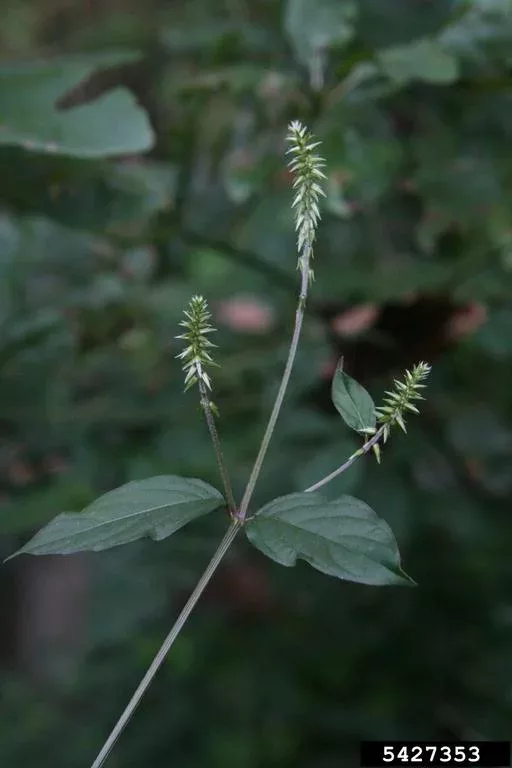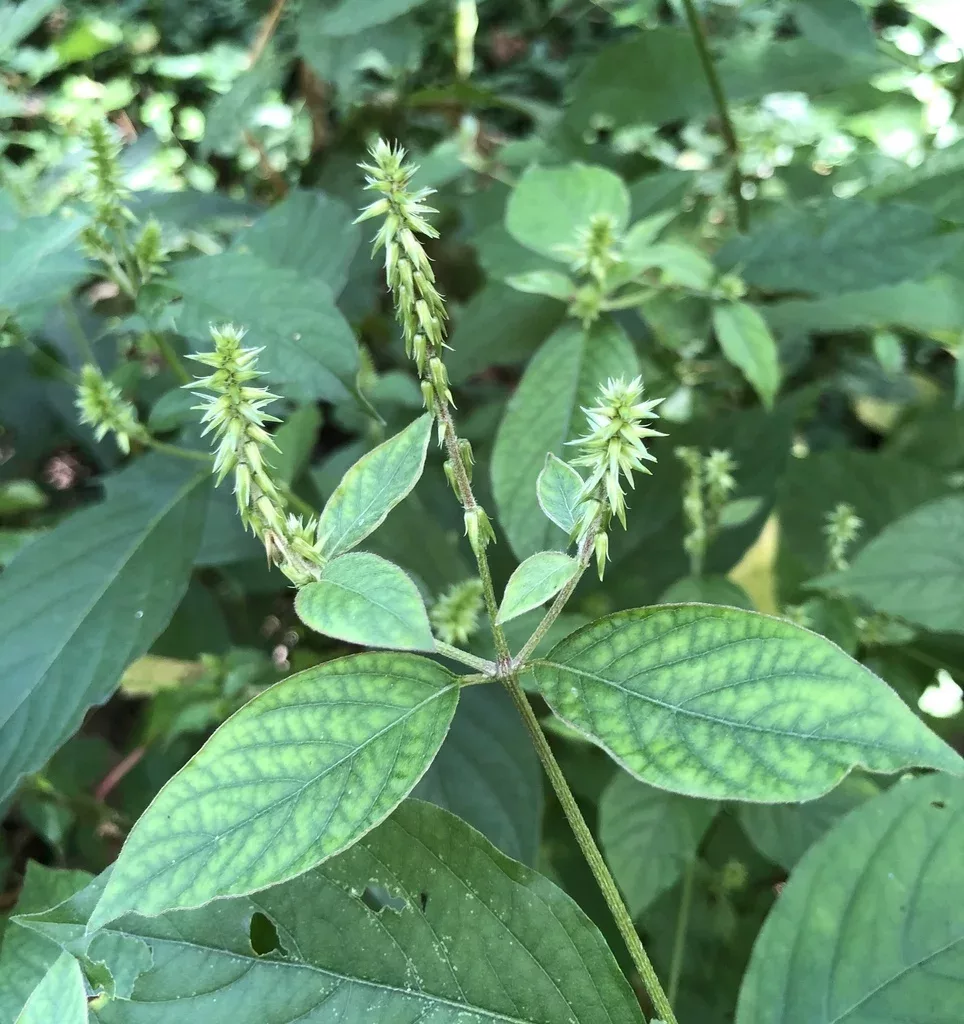
Achyranthes japonica, commonly known as Oriental chaff flower[1] or Japanese chaff flower, is a perennial member of the genus Achyranthes in the family Amaranthaceae. It can be discovered on the roadside and its main distribution is in Korea and Japan.[2]

A. japonica is a perennial plant growing to 50–100 cm (20–39 in) tall with thickened roots. Stems are glabrous or slightly pubescent and shape quadrangular and branched.[2] Its nodes are dilated. The leaves opposite and shape elliptic or oval and slightly pubescent and have petiolate. The leaves are 10–20 cm (3.9–7.9 in) long and 4–10 cm (1.6–3.9 in) wide. Flowers bloom from August to September and inflorescence spikes in axils and at terminals of the stem. From there, tiny green flowers bloom. It has five stamens and a pistil in each flower and unites into one at the bottom. Tiny bracts, branch shaped, easily stick to cloth.
Suitable soils for growth include light (sandy) and medium (loamy) soils.[3] Suitable pH ranges from acidic to neutral soils.[3] It grows in woody areas in lowlands and hills.[2]

Chaff flower’s tall growth habit and dense infestations easily shade out and displace many native plant species. It is typically found in flood plains, ditches, bottomland forests and on riverbanks, growing in rich, moist soil. It prefers partial shade. However, it tolerates full shade, drier upland soils and sunnier conditions on roadsides, field edges and vacant land in urban and industrial areas. It occurs less frequently in open, full-sun environments. Chaff flower spreads quickly along waterways and public areas such as trails. It does not tolerate annual flooding or prolonged periods of inundation. Thus, in bottomlands, it is most commonly found on the first terrace above, or on the edge of, the annually flooded zone.
